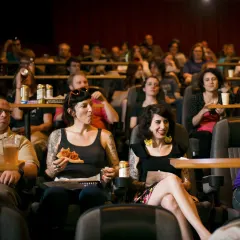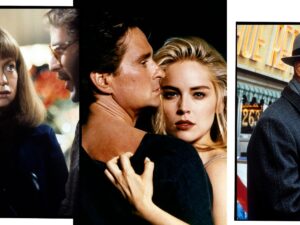
Gus Van Sant, an American filmmaker, screenwriter, and artist, has carved a unique niche in the world of cinema. Known for his eclectic style, Van Sant’s films often explore themes of identity, alienation, and the human condition. His body of work spans independent films and mainstream Hollywood, showcasing his versatility and deep understanding of cinematic art.
Early Career and Breakthrough
Van Sant’s career began with a series of low-budget, independent films that quickly garnered attention for their raw authenticity and innovative storytelling. His debut feature, “Mala Noche” (1986), based on a novel by Walt Curtis, depicted a romantic obsession between a white gay store clerk and a young Mexican immigrant. The film’s gritty realism and Van Sant’s empathetic portrayal of marginalized characters set the tone for his future work.
His next film, “Drugstore Cowboy” (1989), marked Van Sant’s breakthrough into mainstream recognition. Starring Matt Dillon, the film follows a group of drug addicts who rob pharmacies to support their habits. The film was praised for its unflinching look at addiction and its stylish, almost lyrical direction.
Experimentation and Success
The 1990s saw Van Sant experimenting with different styles and narratives. “My Own Private Idaho” (1991), starring River Phoenix and Keanu Reeves, is a loose adaptation of Shakespeare’s “Henry IV” and “Henry V,” set against the backdrop of Portland’s street hustler scene. The film is celebrated for its poetic dialogue, dreamlike visuals, and poignant exploration of friendship and identity.
In 1995, Van Sant ventured into dark comedy with “To Die For”, a satirical look at media sensationalism starring Nicole Kidman. The film was both a critical and commercial success, showcasing Van Sant’s ability to balance humor and tragedy.
Mainstream Recognition
Van Sant achieved mainstream success with “Good Will Hunting” (1997), a drama about a janitor at MIT who is also a mathematical genius. Starring Matt Damon, Ben Affleck, and Robin Williams, the film won two Academy Awards, including Best Supporting Actor for Williams and Best Original Screenplay for Damon and Affleck. “Good Will Hunting” remains one of Van Sant’s most beloved films, demonstrating his talent for eliciting powerful performances and his knack for emotionally resonant storytelling.
Returning to Roots and Innovation
After “Good Will Hunting,” Van Sant continued to balance mainstream projects with more experimental work. “Psycho” (1998), a shot-for-shot remake of Alfred Hitchcock’s classic, divided critics but highlighted Van Sant’s willingness to take bold artistic risks.
In the early 2000s, Van Sant returned to his indie roots with the “Death Trilogy”: “Gerry” (2002), “Elephant” (2003), and “Last Days” (2005). These films, characterized by their minimal dialogue and meditative pacing, explore themes of mortality and human suffering. “Elephant,” which is loosely based on the Columbine High School massacre, won the Palme d’Or at the Cannes Film Festival, solidifying Van Sant’s reputation as a daring and thoughtful filmmaker.
Continued Exploration and Recent Work
Van Sant continued to explore diverse narratives and styles in the 2010s. “Milk” (2008), a biographical film about Harvey Milk, the first openly gay elected official in California, starred Sean Penn and earned critical acclaim, including an Academy Award for Penn. The film not only highlighted Milk’s activism but also Van Sant’s commitment to telling LGBTQ+ stories.
In recent years, Van Sant has directed films like “Restless” (2011), a tender love story between a terminally ill girl and a funeral crasher, and “Don’t Worry, He Won’t Get Far on Foot” (2018), a biographical comedy-drama about paraplegic cartoonist John Callahan, starring Joaquin Phoenix. These films reflect Van Sant’s ongoing interest in complex characters and unconventional narratives.
Conclusion
Gus Van Sant’s filmography is a testament to his versatility and vision as a filmmaker. From intimate character studies to thought-provoking social commentaries, his films challenge and inspire audiences. As he continues to create and innovate, Van Sant’s work remains a vital part of contemporary cinema, celebrated for its depth, empathy, and artistic boldness.







